You might be someone looking to add greenery and color to your backyard garden. Cypress trees make an excellent option since they add shade, beauty, and lots of greenery to the garden.
Different types of cypress trees are the perfect match for any garden size because they require low-maintenance routines. These landscaping trees can handle soil conditions with inadequate water supply.
But it is important to research more about different cypress tree species before investing in one. We wrote this article to provide detailed insights into different types of cypress trees for landscaping. Let’s dive in now:
What Is a Cypress Tree?
A cypress tree is an evergreen tree with needle-like leaves that maintain their color throughout the year. These fast-growing coniferous trees hail from North America, Europe, and Asia.
Cypress trees have an upright and pyramidal shape that provides a showy display in the landscape. These trees prefer a wet environment and can also tolerate occasional drought.
Cypress trees belong to the Cupressaceae family under the conifer classification. These deciduous conifers have foliage that varies from deep emerald green to blue and turns russet brown in fall.
Different cypress tree types do not hold the cypress name. The name is used for some species of fustic and for bald cypress in eastern Canada. (Sources: Britannica). Continue reading this guide to find that out at the end.
Myth and Symbolism of Cypress Tree Types
Cypress trees belong to the larger coniferous trees classification. These deciduous trees have been around for decades and are associated with religious texts or literature.
These notable myths and symbolism might make an individual curious. Below are some of the prominent myths and symbolism of cypress trees:
Japanese Mythology
Hinoki cypress trees are crucial during religious and Shinoti rites. These cypress trees are ideal for making the scepters of the priests and instruments. Besides that, lighting a fire by rubbing two hinoki cypresses during the religious rites.
Chinese Mythology
Cypress seeds are a symbol of longevity in Chinese culture since they are conceived of yang energy. Chinese communities also believe that you can find jade and gold beneath it.
Catholicism Meaning
These trees represent the life and death of Jesus Christ. The woods from the tree were used to make the cross where Jesus was crucified.
Immortality Meaning
Cypress trees are usually lined up along the cemetery lines as a symbol of eternal life. The upward growth symbolizes the movement of the soul to heaven.
Underworld Meaning
Cypress trees are trees of Hades since the dark green foliages are used in the Hade’s cult. The leaves are used to make crowns that symbolize sacrifice.
Greek Mythology
Cypress’s name originated from the Cyparissus legend with whom the sun god Apollo fell in love. The maiden domesticated a deer that Apollo accidentally killed with a bow. Apollo made the deer into a tree when she begged to die due to the devastation.
How to Identify Different Types of Trees
Cypress trees are common ornamental landscaping tree species. These evergreen trees have notable characteristics that make them valuable. Knowing these features is crucial before lining them up along your property.
Height
Most cypress trees can reach 70ft high. But there are some species that grow up to 25-65ft. These types of cypress trees create a consonant shade to their height.
Shape
Cypress trees have pyramidal and symmetrical shapes. But these shapes tend to vary depending on the cypress tree type.
Fruit
These coniferous trees produce small cones that are nutty and woody. Each cone can generate about 30 seeds.
Leaves
Cypress trees have needle-like leaves that are dark green to blue green or light green. These scaly leaves can be overlapping or braided on their branches.
Branches
Cypress trees are either evergreen or deciduous since it depends on the species. The woody branches have flat or smooth surfaces for easy identification.
Different Types of Cypress Trees with Pictures
Nootka Cypress (Cupressus Nootkatensis)
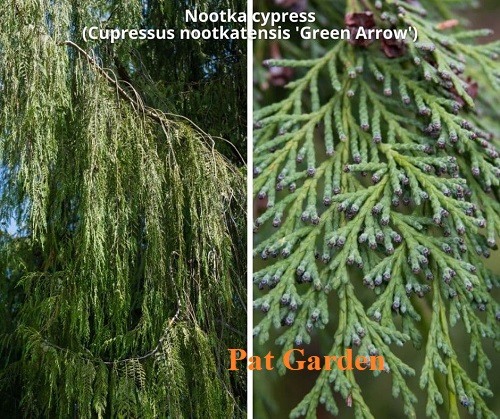
The species is also called Alaskan cypress since it hails from Alaska and Northern California. The cypress tree can tolerate freezing weather and winter gardens.
The sporting narrow frame and deep dark green foliages make them ideal for ornamental landscaping. These cypress trees can grow up to 20ft and shade of up to 4ft.
Monterey Cypress (Cupressus Macrocarpa)
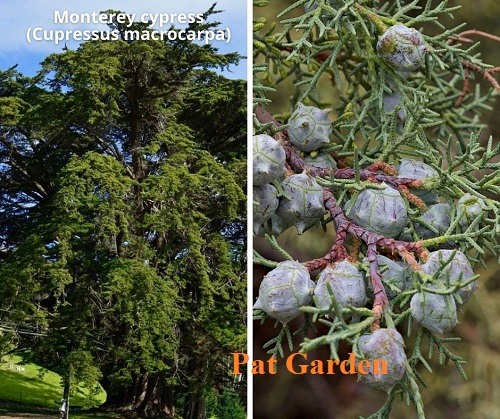
These are medium-size species native to California. The flat top forms and spreading sideways branches make these cypress trees unique.
The tree can grow up to 130ft with soft, scaly, and bright green foliages. The leaves give a strong citrus scent after crushing.
Bald Cypress (Taxodium Distichum)
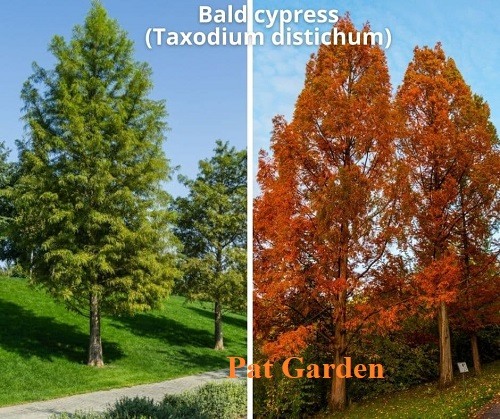
These cypress trees are native to Florida and prefer damp environments to thrive well. Bald cypress trees become needleless during the winter season.
They can tolerate drier soil conditions and grow up to 70ft. The upright and triangular forms provide an excellent shade.
Arizona Cypress (Cupressus Arizonica)
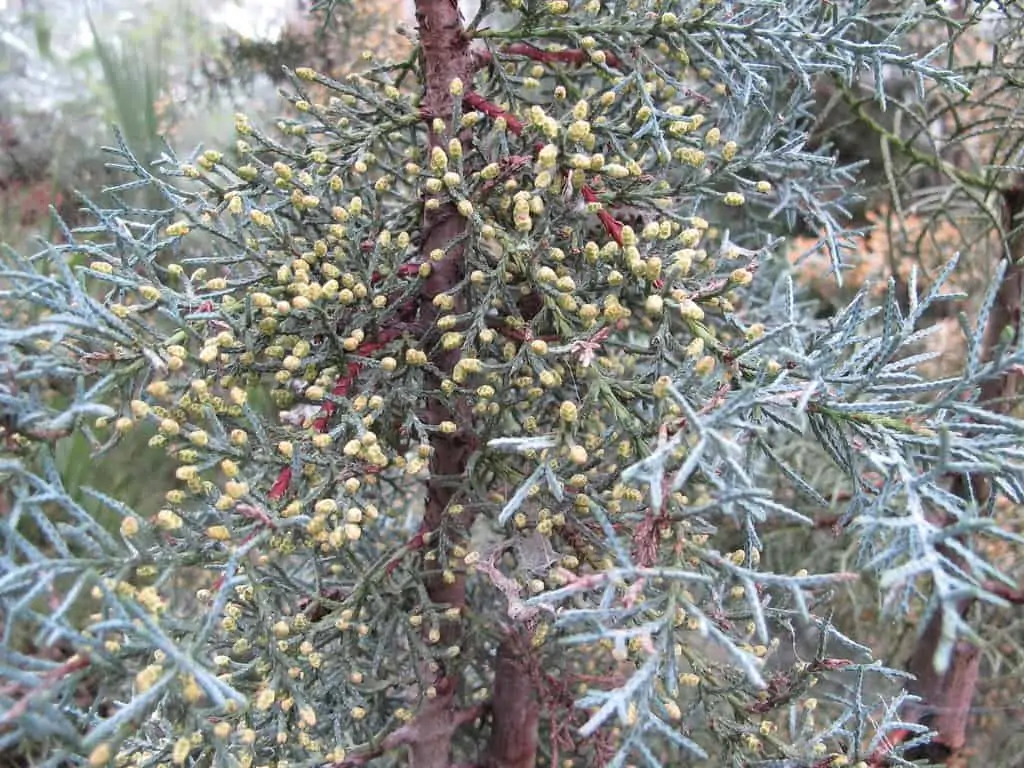
Arizona cypress trees are native to Arizona state. They are also cultivated in Southern California and Western Texas.
These trees can also tolerate the heat and drought of the Southern United States and Northern Mexico. They produce grayish-green leaves and cones.
Chinese Weeping Cypress (Cupressus Funebris)
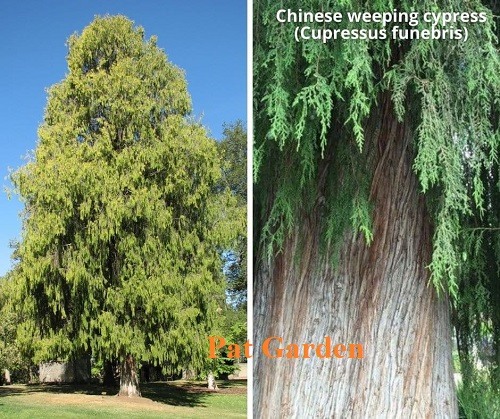
The Chinese weeping cypress tree is a medium-sized species with light-green foliages. The cypress tree species is also called mourning cypress due to its weeping appearance.
The mourning appearance is due to the drooping branches. The growing habit makes these cypress trees ideal for ornamental landscaping. They can grow up to 20-30ft tall at maturity.
MacNab Cypress (Cupressus Macnabiana)
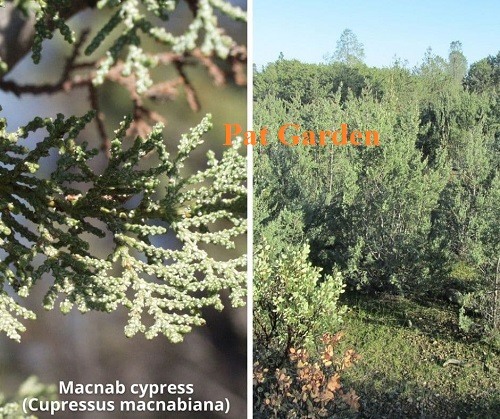
Macnab cypress trees are native to the foothill of Northern California Sacramento Valley. They produce light-green foliages and tiny cones with horn-like projections.
The red-brown bark with a purplish sheen makes Macnab cypress trees unique from others. The shrub-like growth style with an average height of 40ft generates a nice fragrance.
Gowen Cypress (Cupressus Goveniana)
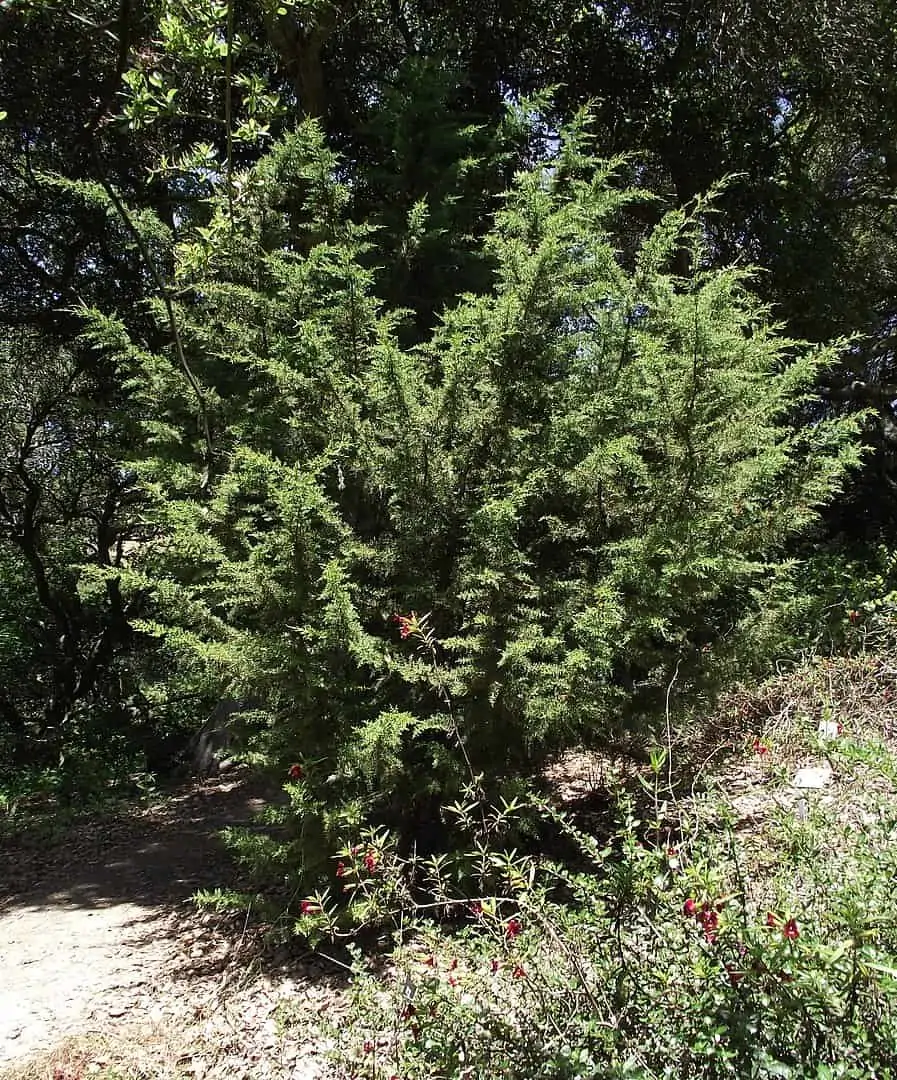
The cypress tree hails from California, Monterey Peninsula, and the western United States. These evergreen trees are found in a scattered population with a conic.
The average height varies from 30-160ft in its ideal conditions. The dense dark green foliages spread out to provide an ornamental shade. These slow-growing cypress species are perfect for backyard gardens.
Mendocino Cypress (Cupressus Pigmaea)
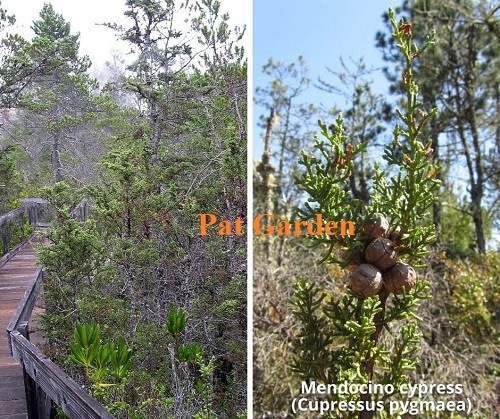
It is also called pygmy cypress tree native to the coastal terraces and mountain ranges of Sonoma and Mendocino counties in North-West California. It is a subspecies of Cupressus Goveniana due to their close relationship.
Mendocino cypress trees produce dull-light green foliages with long scale-like leaves. The seedlings have needle-like leaves and mature counterparts produce spherical-like cones with scales.
Lawson Cypress (Chamaecyparis Lawsoniana)
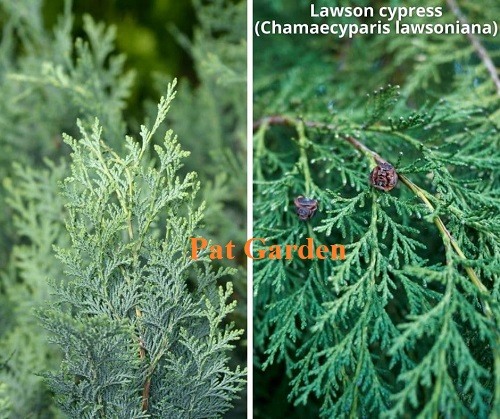
These are tall evergreen cypress trees with green or bluish-green foliages. The leaves are flat, feathery scale-like, and spray making the species ideal for the forestry environment.
Lawson cypress trees can grow up to 200ft tall in ideal conditions. But there are some species that can reach 20ft tall to suit backyard gardens. The tree requires loamy soil and full sunlight exposure.
Leyland Cypress (Cupressus Leylandii)
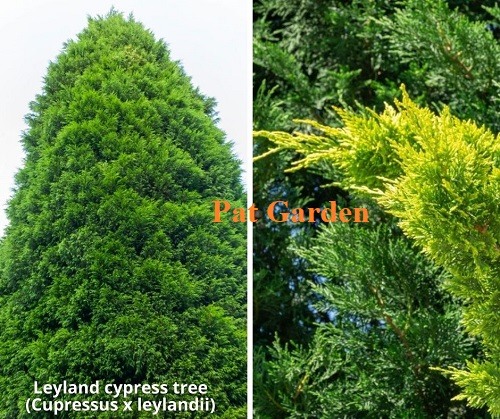
The cypress species has dense foliage and a broad columnar with a pyramidal shape. This fast-growing evergreen tree is a perfect option for privacy screens due to its distinctive features.
It can reach 22ft tall at maturity with pruning and without pruning up to 70ft tall. Leyland cypress species thrive in zone 6 to 10.
Hinoki Cypress (Chamaecyparis Obtusa)
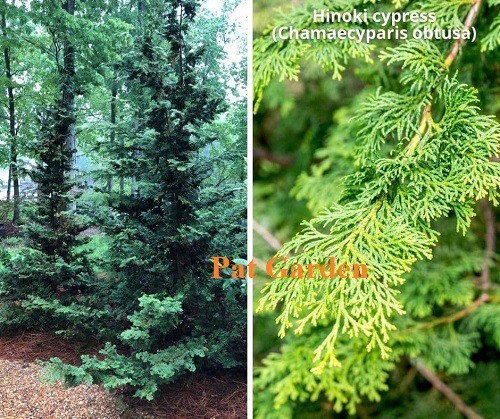
Hinko cypress is a cypress tree with reddish bark that peels at maturity. It can grow up to 3-6ft tall. The pyramidal shape makes these trees ideal for gardens and landscaping.
The dark green foliages make hinoki cypress trees ideal for residential evergreen gardens. The dwarf varieties make perfect privacy hedges and foundation plants.
Mediterranean Cypress (Cupressus Sempervirens)
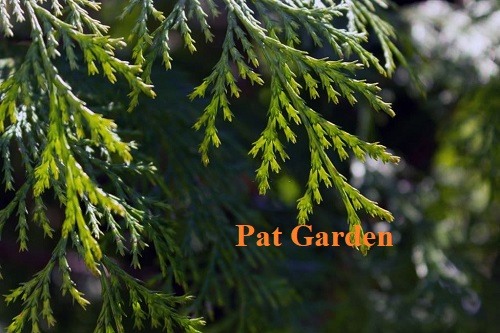
These cypress trees are also called Italian cypresses. They are tall and skinny conifers with feathery soft evergreen foliage sprays. The oval brownish cones can grow up to 1.5 inches.
The Italian cypress tree has a tall green column appearance. It is ideal for vertical height gardens. These cypress trees thrive in well-drained soil and full sun exposure.
Kashmir Cypress (Cupressus Cashmeriana)
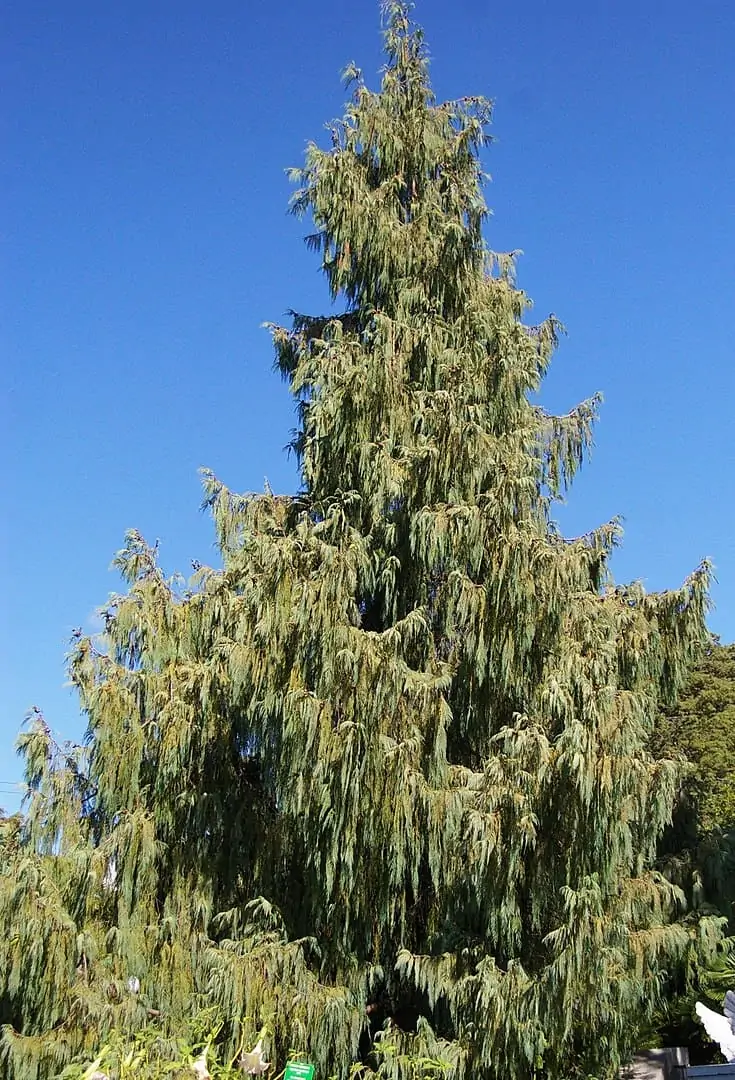
These cypress trees are native to Bhutan despite their name. The dwarf growth habit makes Kashmir cypress trees ideal for any landscape. These cypress trees can grow broad and thrive in zone 9.
The weeping branches that undulate during the breeze with their blue-green foliages will make your backyard garden stand out. These trees require loamy, sandy, and well-drained soil.
Bhutan Cypress (Cupressus cashmeriana)
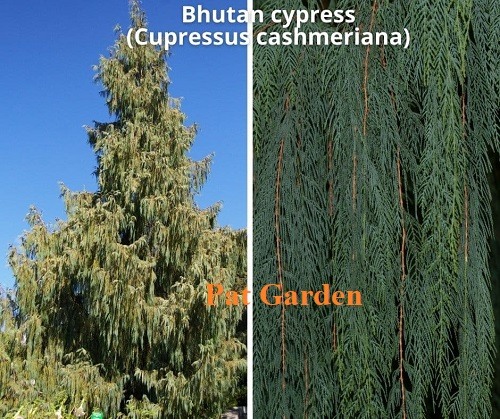
It is the most expensive ornamental cypress tree species due to its weeping branches and blue-green foliages that provide a graceful appearance.
Bhutan cypress trees are ideal for planting together with yucca, acacias, and palm trees. They are a perfect fit option for any landscape and grow zone of 9.
Cheng’s Cypress (Cupressus chengiana)
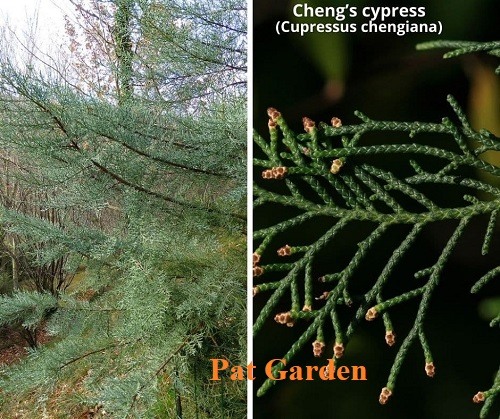
This cypress tree hails from the hillside and valley of the Gansu province of China. The cypress has beautiful matte green leaves and globular reddish-brown cones.
Cheng’s cypress tree can reach 1000ft in its ideal growing condition. The overlogging epidemic has made these precious trees become rare.
Cuyamaca Cypress (Cupressus stephensonii)
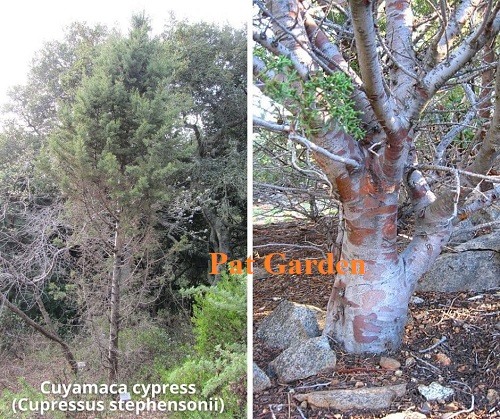
It is another precious cypress species that hails from San Diego, California. It has smooth and reddish-brown bark with an open shape.
The blue-green leaves emit a lemon scent when crushed. The California 2003 fire has made these cypress trees become extinct.
Lemon Cypress Trees (Cupressus macrocarpa ‘Goldcrest’)
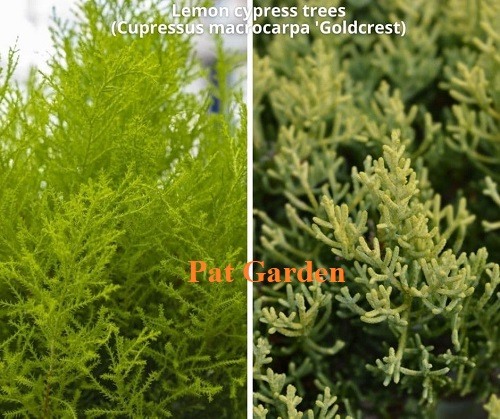
Lemon cypress trees are the most popular landscape trees in the United States of America and Europe. They produce soft leaves that are golden yellow throughout the year.
The upright columnar growth allows these trees to produce excellent timber for furniture and fixture construction. The trunk has scaly bark with spherical cones.
Moroccan Cypress (Cupressus Atlantica)
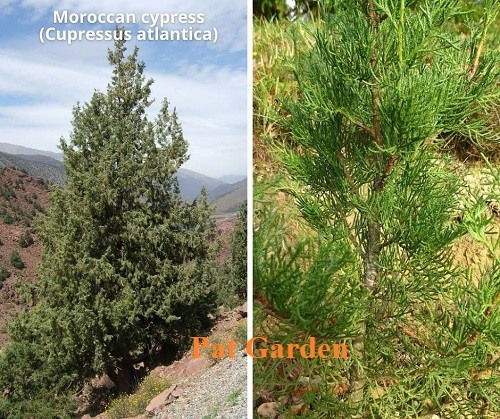
It is also called the atlas cypress tree since it hails from the atlas mountain of Southern Morocco. It produces sport blue leaves with white streaks and a unique gray trunk.
The cypress species is resistant to drought and freezing points. The wood is durable, aromatic, and lightweight. Overgrazing and overexploitation is the reason behind their extinction.
Pond Cypress (Taxodium ascendens)

These cypress trees are native to Florida and can grow up to 60ft tall. They produce golden brown and orange leaves during the fall season.
They thrive near the marshes and ponds making their trunks swollen. They are also drought tolerant and do not produce knees.
Saharan Cypress (Cupressus dupreziana)
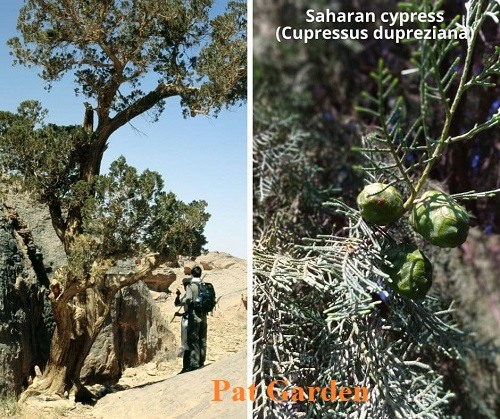
These cypress trees are native to the Saharan region. They are the most drought tolerant species that grow up to 100ft tall.
The sporting matte green leaves make these cypress species stand apart from other landscape trees. They are the best option for the wilderness.
San Pedro Martir Cypress (Cupressus Montana)
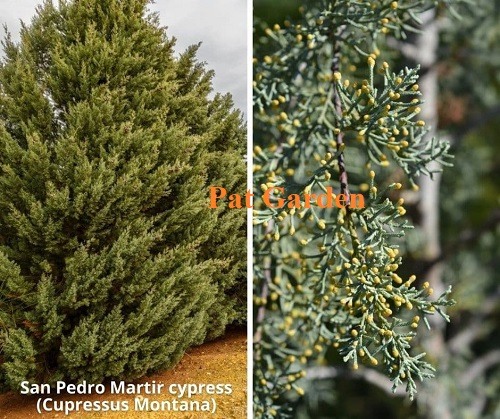
San Pedro cypress trees are native to Mexico and California. They have an average height range of 16-65ft.
The conical shape and dark brown bark with strips make them excellent for landscaping backyards. They have close similarities to Arizona cypress trees.
Tecate Cypress (Cupressus forbesii)
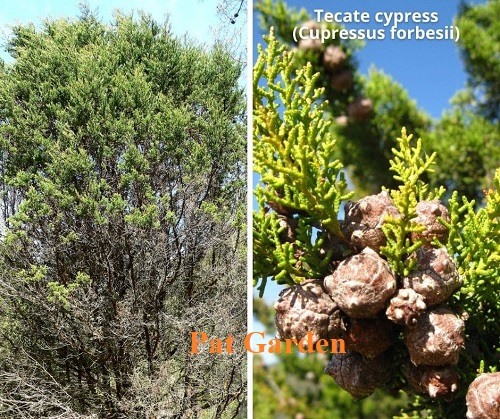
It is also called the Forbes cypress tree due to its upright growing behavior. It can reach 30ft tall and 15ft wide.
The multi-trunk cypress tree thrives in a rocky environment and produces deep to light green foliages with dark brown cones.
Tibetan Cypress (Cupressus gigantea)
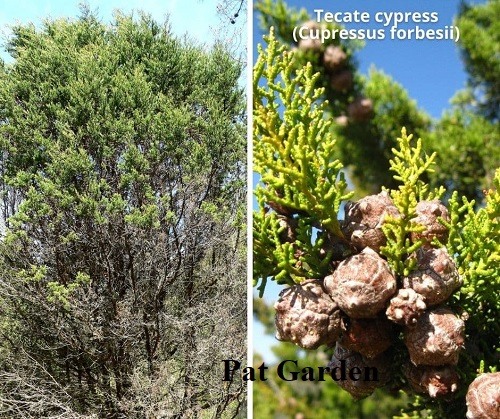
Some people called them Tsangpo cypress trees. These cypress species are subtypes of Himalayan cypresses.
Tibetan cypress trees have a maximum height of 165ft in the wild. The pyramid appearance and dark green sprays make them beautiful.
Smooth Arizona cypress (Cupressus arizonica var. glabra ‘Blue Ice’)
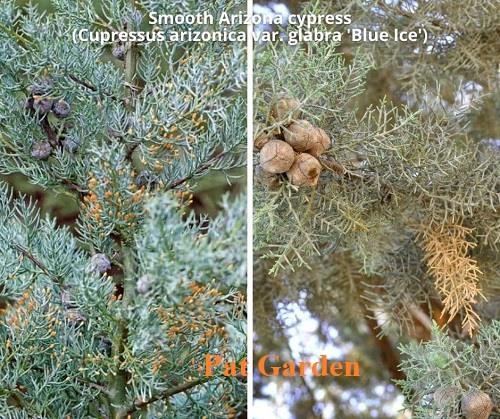
These are hardy cypress trees that thrive in zone 6 and dry environments. They have a striking open form with standout silver and blue green needles. These smooth Arizona cypress trees are native to the Northern United States.
Conclusion
All types of cypress trees are at the frontline choice for ornamental landscaping trees. Their sturdiness, durability, lightness, and resistance to elements make them a great deal.
These aesthetic trees are also excellent as border trees, windbreakers, and arbors. But it can be a daunting experience to make an informed decision before buying.
If you have read up to this point, we can assume you are looking to buy a specific type of cypress tree for your garden. We hope the information above will help you during the decision-making process.
Readers Who Read This Also Read:
